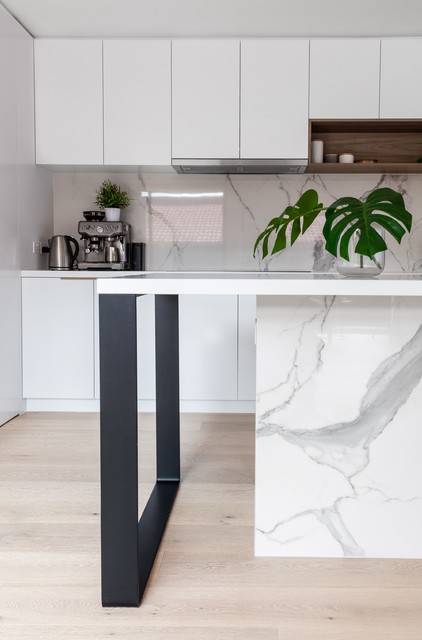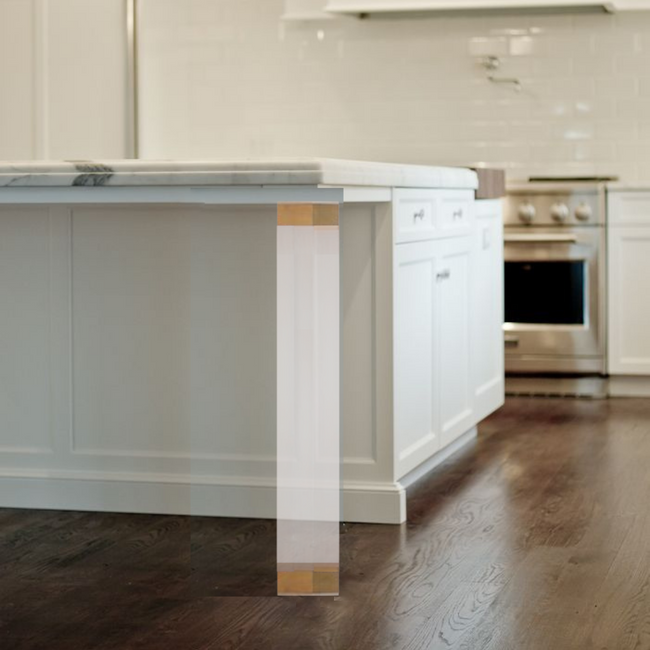Picking the Suitable Kitchen Island Leg for Durability and Functionality
Picking the Suitable Kitchen Island Leg for Durability and Functionality
Blog Article
The Value of a Sturdy Cooking Area Island Leg in Creating a Practical Cooking Area
A durable cooking area island leg offers as an essential part in developing a useful food preparation atmosphere, offering essential support for both the kitchen counter and various cooking area tasks. As cooking areas progress into multifunctional areas for food preparation, dining, and socializing, the selection of products and design factors to consider for island legs ends up being significantly vital.
Advantages of Sturdy Island Legs
Supplying vital assistance, strong kitchen area island legs play a pivotal duty in enhancing the capability and toughness of cooking area islands - kitchen island leg. These legs not just birth the weight of the countertop and any type of added items positioned on the island, however also add to the overall stability of the framework. A well-supported cooking area island guarantees that it stays useful and upright, even under hefty usage, which is particularly essential in hectic kitchen area environments
In addition, strong island legs can improve the visual appeal of the kitchen area. They give a strong structure that can match various layout styles, from modern to traditional. This convenience allows house owners to personalize their cooking area islands according to individual taste while making sure that the structural honesty remains uncompromised.
In addition to their encouraging role, robust cooking area island legs can also enhance safety. Ultimately, spending in durable cooking area island legs is necessary for a practical and visually pleasing cooking area.
Materials for Kitchen Island Legs
When choosing materials for kitchen island legs, sturdiness and visual allure are crucial variables to take into consideration. One of the most usual products consist of wood, metal, and engineered wood, each offering one-of-a-kind advantages.
Wood, such as cherry, oak, or maple, is a traditional selection due to its stamina and timeless charm (kitchen island leg). It can stand up to significant weight and is resistant to use, making it ideal for high-use kitchen area settings. In addition, hardwood can be discolored or painted to enhance various kitchen area designs
Metal legs, commonly crafted from stainless-steel or wrought iron, offer a commercial and contemporary look. They are unbelievably solid and can sustain considerable tons while being immune to moisture and warm, which is useful in a cooking area. Metal legs can likewise be easily cleansed, enhancing their usefulness.

Design Considerations for Stability
The choice of products for kitchen area island legs directly influences the layout factors to consider for stability. When creating a cooking area island, it is paramount to review the weight-bearing ability of the picked products. Larger materials, such as strong timber or metal, commonly supply better stability, particularly under the tension of everyday usage.
Additionally, the leg layout need to incorporate appropriate geometry to boost security. A wider base increases the support area, lessening the risk of tipping or tottering. Consideration should additionally be given to the height of the legs; disproportionate leg lengths can bring about inequality, compromising the overall stability of the island.
Additionally, the circulation of weight across the island is vital. Making sure visit the website that the leg placement lines up with the heaviest elements, such as home appliances and counter tops, will better improve stability.
Maintenance Tips for Longevity

Depending on the material of the legs-- whether timber, metal, or composite-- appropriate cleaning approaches ought to be used. Steel legs may require a light polish to avoid rust and keep their appeal.
In addition, tightening up bolts and screws regularly can make certain security and protect against wobbling. Consider enhancing the legs with added braces or sustains to enhance durability if the cooking area island experiences hefty usage. Finally, applying a protective surface or sealant can guard versus wetness and discolorations, prolonging the life expectancy of the legs. By following these maintenance suggestions, house owners can ensure their kitchen island legs remain useful and durable for years to find.
Choosing the Right Leg Design
Regular upkeep guarantees that cooking area island legs continue to be durable and practical, however selecting the right leg style is equally essential for both aesthetics and assistance. The option of leg design can considerably influence the total style and consistency of your kitchen.

Functionality is one more crucial facet. Thicker legs or those with a strong base can support larger kitchen counters and equipment, enhancing the island's energy. Alternatively, slim legs might produce a ventilated appearance, suitable for lighter styles however possibly much less supportive.
Final Thought
In recap, the value of sturdy kitchen area island legs can not be overemphasized in the creation of a functional food preparation area. These legs supply necessary assistance, enhance stability, and add to the general visual of the kitchen. By carefully selecting ideal products and styles, in addition to carrying out appropriate upkeep practices, the longevity and performance of cooking area islands can be guaranteed. Eventually, investing in robust island legs is basic to attaining a reliable and secure cooking setting.
A durable cooking area island leg serves as a fundamental component in establishing a useful food preparation atmosphere, providing necessary support for both the countertop and different kitchen area activities.Offering necessary support, tough cooking area island legs play a critical function in improving the capability and sturdiness of cooking area islands. Eventually, spending in tough kitchen area island legs is important for a practical and visually pleasing cooking location.
Consideration must likewise be offered to the elevation of the legs; out of proportion leg lengths can lead to inequality, endangering the overall security of the island.
Wooden legs give heat and a timeless look, while steel legs provide a contemporary and industrial feel.
Report this page